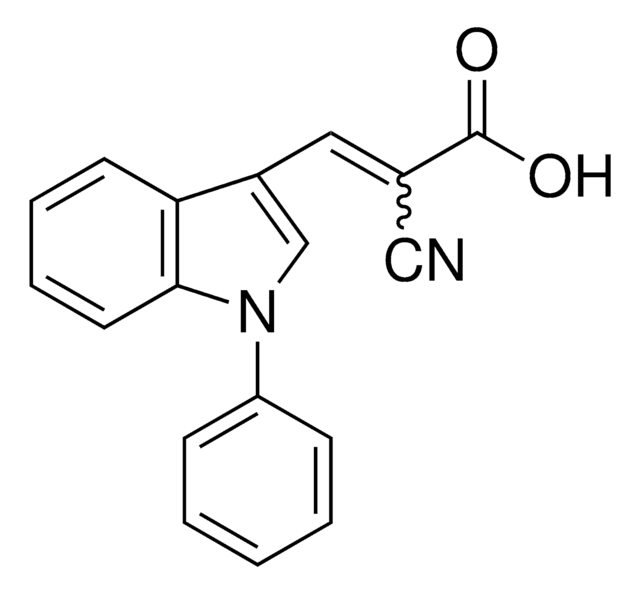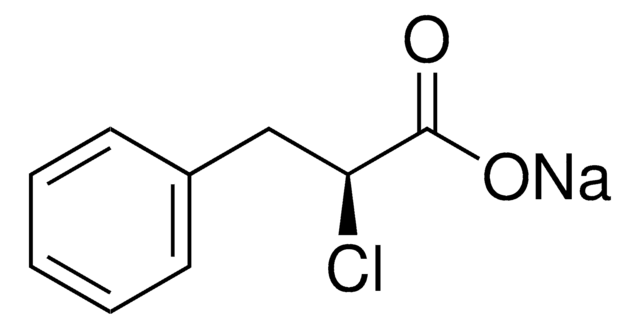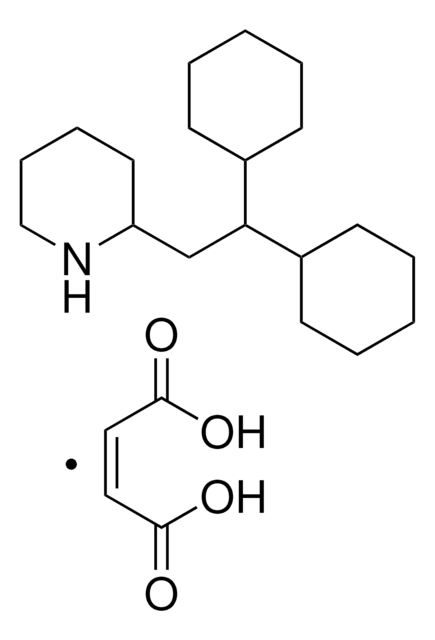PZ0160
UK-5099
≥98% (HPLC), powder, mitochondrial pyruvate carrier inhibitor
Sinônimo(s):
2-Cyano-3-(1-phenyl-1H-indol-3-yl)-2-propenoic acid, PF-1005023
About This Item
Produtos recomendados
Nome do produto
UK-5099, ≥98% (HPLC)
Ensaio
≥98% (HPLC)
Formulário
powder
cor
yellow to tan
solubilidade
DMSO: >20 mg/mL
temperatura de armazenamento
2-8°C
cadeia de caracteres SMILES
OC(=O)\C(=C\c1cn(-c2ccccc2)c3ccccc13)C#N
InChI
1S/C18H12N2O2/c19-11-13(18(21)22)10-14-12-20(15-6-2-1-3-7-15)17-9-5-4-8-16(14)17/h1-10,12H,(H,21,22)/b13-10+
chave InChI
BIZNHCWFGNKBBZ-JLHYYAGUSA-N
Aplicação
- as a mitochondrial pyruvate blocker to reduce pyruvate transportation into mitochondria in Roswell park memorial institute (RPMI) 1640 medium for prostatic cancer cell line culture
- in dimethyl sulfoxide (DMSO) stock, to study the effect of inhibiting pyruvate transport into mitochondria on pro-inflammatory responses in lipopolysaccharide activated macrophages
- in topical treatment in order to study its effect on hair cycle induction in experimental mice
Ações bioquímicas/fisiológicas
Características e benefícios
Código de classe de armazenamento
11 - Combustible Solids
Classe de risco de água (WGK)
WGK 3
Ponto de fulgor (°F)
Not applicable
Ponto de fulgor (°C)
Not applicable
Escolha uma das versões mais recentes:
Certificados de análise (COA)
Não está vendo a versão correta?
Se precisar de uma versão específica, você pode procurar um certificado específico pelo número do lote ou da remessa.
Já possui este produto?
Encontre a documentação dos produtos que você adquiriu recentemente na biblioteca de documentos.
Os clientes também visualizaram
Conteúdo relacionado
Apoptosis, or programmed cell death (PCD), is a selective process for the removal of unnecessary, infected or transformed cells in various biological systems. As it plays a role in the homeostasis of multicellular organisms, apoptosis is tightly regulated through two principal pathways by a number of regulatory and effector molecules.
Nossa equipe de cientistas tem experiência em todas as áreas de pesquisa, incluindo Life Sciences, ciência de materiais, síntese química, cromatografia, química analítica e muitas outras.
Entre em contato com a assistência técnica












